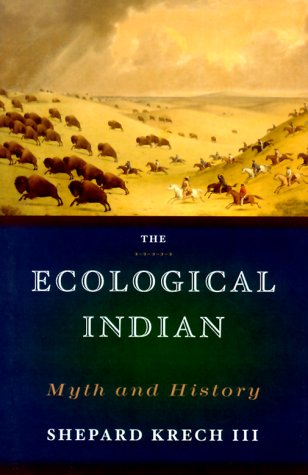
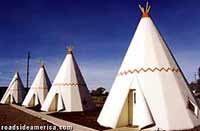
For a subject worked and reworked so often in novels, motion pictures, and television, American Indians are...the least understood and the most misunderstood Americans of us all.
John F. Kennedy, 1963


For a subject worked and reworked so often in novels, motion pictures, and television, American Indians are...the least understood and the most misunderstood Americans of us all.
John F. Kennedy, 1963
Stereotypes about cultural traits
Joseph Riverwind wrote the following for this site:
The Basic Indian Stereotypes
By Joseph Riverwind (Taino)
It is the goal of this page to dispel the common myths which surround the Native people of this continent. Stereotypes abound thanks to the lack of education and the media's shortsightedness. The following is a compilation of the most prevalent stereotypes of our people:
Few of us lived in tipis, wore feather bonnets, or fought like "braves"
Cowboy movies during the 20th century portrayed the Plains people as living in tipis, wearing war bonnets or feathers in their hair, riding horses, brandishing war lances, and more. As a result of this, the common assumption is that all Native people were like those portrayed in films. This is very far from the truth.
Yes, the Plains people did live in tipis, and they were nomadic. They readily adopted horses, introduced by the Spaniards, into their nomadic life and used them war as well as for travel. (Before horses, they used dogs to pull loads.) In the East, the people lived in longhouses, wigwams (wooden structures similar to log cabins), and (in the Southeast) thatched-roof houses. Out West, the desert people lived in structures made of adobe—mortared sand and water—which they shaped into bricks to make homes. You can research more on the different dwellings of Native people at your local library or online.
We had no inherited royalty
The nations of this country have never had a concept of Indian royalty. The Indian princess is strictly a European concept. We do not have kings, queens, or princesses. If someone in your family tells you his or her great-grandmother was a Cherokee princess, please correct the person on that issue.
As James W. Loewen writes in his book Lies Across America, "Indeed, most American Indian 'chiefs' were never chiefs. Europeans projected chiefdom onto Native Americans because they could not easily conceive of people living in a civil society without permanent formal rank. Also, making a 'chief' of a respected Native (and sometimes any Native who happened to be handy) gave a European leader an opposite with whom to deal—someone who could sell land, for instance."

We did not smoke a peace pipe
Sitting Bull once said that there is no such thing as a peace pipe because there has never been peace. The pipe is sacred to many people, and we treat it with much respect. It teaches us just as the Bible teaches Christians. We never put illegal narcotics into a pipe, so people can't get "high" from smoking one. We use blessed tobacco and often add other herbs, such as spearmint, red willow bark, and bearberry leaves, for a pleasant taste or aroma.
We did not whoop
At many exhibitions we see this behavior of putting your hand in front of your mouth and making the "whoo whoo" noise. It is even funnier when we see boys and men doing it. The ululation was done by women when their husbands went to war, when they returned from a successful hunt or raid, or at the death of a loved one. The women made this sound with the tongue and the mouth slightly closed (no hands).
The men had a war cry that they issued in battle to intimidate and scare their enemies. This sound, coupled with the warriors' painted faces, had a crippling psychological effect on the recipients, often making them flee for their lives. So when we see men doing the "whoo whoo whoo" thing, we laugh because to us they sound like the women.
We do not pound a drum or "chant" primitively
The drum is the heartbeat of our people. It unites us all in dance and fellowship at powwows or traditional events unique to each tribe. The songs we sing are old and new. Many span hundreds of years, having been passed down from generation to generation. Yes, I said songs, not chants. We are not Gregorian monks; they are the ones who chant.
We do not have shamans
Thanks to the New Age craze that has spread around the world, there are many self-proclaimed "medicine men" and "shamans"—people who claim to follow our spiritual ways, having "learned" everything they know from books bought at the local book store. After the book Black Elk Speaks was published, people thought they could become instant medicine men and women. Little do they know that Black Elk did not tell the whole truth to the book's writer.
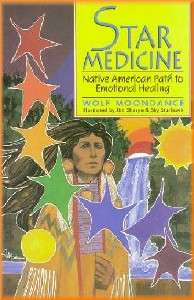
Some people go so far as to charge for vision quests or sweat lodge ceremonies. Never get taken in by someone like this, much less by self-proclaimed spiritual leaders who cannot tell you truthfully where they received the permission and training to perform these ceremonies. It is dangerous when these people attempt to perform these ceremonies and involve others who do not know any better. We do not tolerate these people within our Native communities, and lately many of our medicine people have traveled off the reservation to put a stop to these charlatans.
Some quick definitions of the most common names for our spiritual leaders: Medicine Man—A medicine man is a person who is knowledgeable in herbs and cures for various ailments and ills. Healer—A healer uses prayers and ancient methods for curing and healing. Shaman—This is not a Native American word. "Shaman" is derived from Russian Siberia and is not used by us.
We do not worship nature
Everyone seems to think we worship the sun, trees, animals, and spirits. There is one Creator, and we call him/her by different names. The first priests who set foot on this land watched as Native people raised their hands to the sun and prayed. Since they were "civilized" rather than "savage" like us, they took this to be worship of the sun. If the priests had asked, we would have told them the prayers were for the force that created the sun, not the sun itself.
The same goes for animals and other aspects of nature. We believe they have a living spirit within them. We honor and respect them. But we do not worship them.
Our ancestors learned from observing these aspects of nature. The traits of different animals showed them how to survive. Our ancestors learned to hunt from the wolf, for example; they copied the way a pack would corral and kill its prey. The first Americans were not the only ones who learned this method. At one time, everyone on this earth was a hunter/gatherer. Observance and respect for nature was a learning process which ingrained itself in our ancestors' lives and continues to this day.
We do not all have spirit animals or funny "Indian names"
Another New Age misconception is that people can "choose" their "Indian names," "spirit animals," or "totems." Not all Native people have animal spirits as guardians or protectors; if they did, it is not something easily earned. And many of us are given names, but these names are not spoken out loud or used as a tool for self-aggrandizement.
Both things are very personal, and I will only say that yes, this is a part of our spiritual lives and is not something to be discussed in this type of forum. But I will add that we do not get the names as a result of a dream, a feeling, or a natural affinity for a certain animal—and certainly not from some plastic shaman ceremony. I will say no more on this subject.
Additional notes from Rob
Joseph limited himself to cultural stereotypes involving beliefs and practices. Our Hall of Shame combines the cultural and personal stereotypes—the stoic, drunk, or good-for-nothing Indian—in one comprehensive list. Each item provides a summary of the subject but is by no means comprehensive. One probably could write a book on each of these subjects.
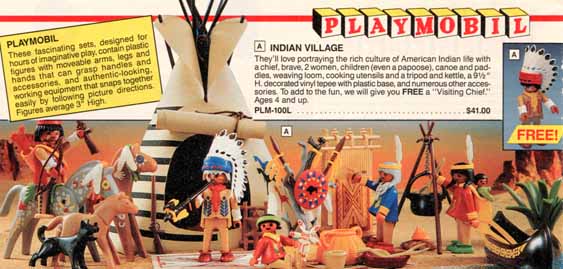
One overriding stereotype is that all Indians were the same—that they all wore buckskins and feathers, lived in tipis, followed a great chief and his medicine man, danced and prayed to nature, etc. The Playmobil Indian Village set suggests the problem. It intermingles what looks like an Apache warrior, a Plains Chief, a Navajo weaver, and an Algonquin canoe.
Actually, these come from several separate, largely unrelated cultures. As the 500 Nations title suggests, thousands of different Indian cultures existed before Columbus arrived. They were as distinct as the European cultures of the British, the Spanish, the Vikings, the Russians, and the Greeks.
Stereotypes about personal traits
The following posting lists many of the traits associated with the Indian person. Many have corresponding pages on this site.
For comparison's sake, the posting also lists Native stereotypes about non-Natives.
How Each Side Sees The Other Side
Some non-Native stereotypes of Natives:
1) Lazy — not motivated to work
2) Savage or wild
3) Get drunk quickly or drink a lot
4) Lack sense of humor
5) Soft spoken or quiet
6) Have no money sense
7) Make little effort to get an education
8) Close to nature all the time
9) Adhere to "Indian time"
10) Most of the work they can do is associated with handicrafts
11) Want their land back
12) Wallow or live in the past
13) Always asking for handouts
14) Feel world owes them a living
15) Ostracize themselves by failing to blend into society
16) Lack of unity and tribal factionalism
17) Worship pagans
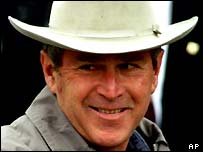
Some Native stereotypes of non-Natives:
1) Not trustworthy or back-stabbing
2) Speak with forked tongue
3) Materialistic and money hungry
4) Greedy — don't share with fellow man
5) Competition or power hungry
6) Evasive
7) Business oriented/selfish, self-centered
8) Narrow minded and prejudiced
9) Live by time clock
10) No respect for fellow man
11) Manipulate nature/have no respect for nature
12) Want others, especially minorities, to conform to their ideals
13) Fail to show equality in court
14) Hypocrisy in Christianity
A study released 8/29/07 provides more data on these points:
Most Americans admit knowing little of contemporary Indian life; Indians eager to show successes and continuing challenges
The nonpartisan public opinion research and citizen engagement organization Public Agenda today released a new qualitative study exploring how American Indians* and non-Indians think about each other titled "Walking a Mile: A First Step Toward Mutual Understanding." The research explores Indian's perceptions of their place in contemporary American society and how non-Indians view American Indians, what they know (or think they know), the generalizations they make and stereotypes they hold, how their perceptions were formed and their interest in learning more.
The research is available online at: Walking a Mile: A First Step Toward Mutual Understanding
Given the limited documented opinion research on the topic, this study may be one of the most in-depth examinations of the thinking of these two groups about each other yet undertaken. The findings are based on the views of people in 12 focus groups conducted in 2006 and 2007 throughout the United States: seven with Indians and five with non-Indians.
.
.
.
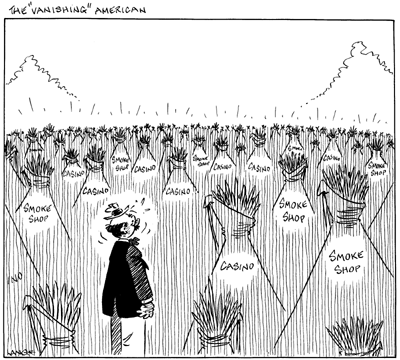 The research details the thinking of both groups regarding Indian history, the present and how better understanding can develop in the future. The research shows how little most Americans know about the diversity of contemporary Indian experience and points to the need for depictions of Indians outside of casinos and impoverished reservations.
The research details the thinking of both groups regarding Indian history, the present and how better understanding can develop in the future. The research shows how little most Americans know about the diversity of contemporary Indian experience and points to the need for depictions of Indians outside of casinos and impoverished reservations.
While the Indians interviewed for the research described their sadness about the past and widespread prejudice and discrimination against Indians today, they also talked about their hopes and feelings of success – their pride in the great strides Indians have made economically and theirs sense that their lives are improving.
The research also points to a number of revelations that call for additional research. For instance, why non-Indians acknowledge that Indians have been badly mistreated in the past, on the one hand, and yet at the same time resent what they see as "preferential treatment" by the government, on the other. The report also notes generally more favorable attitudes toward Indians among Americans living far from concentrations of Indian populations and a somewhat higher prevalence of more negative views among those living closer to Indian reservations.
More on "Walking a Mile"
"Walking a Mile's" recommendations
More on the differences between groups
A shining city on a hill: what Americans believe
Hercules vs. Coyote: Native and Euro-American beliefs
Native vs. non-Native Americans: a summary
Indians believe stereotypes too
Not only do some Indians believe the stereotypes about non-Native, they also believe the stereotypes about themselves. As Paul Chaat Smith explains in Exile on Main Street: Home of the Brave:
The victory of these new stereotypes and our seduction by them has serious implications for contemporary Indian life. In the old days; by this I mean fifteen or twenty years ago there was a sense of irony and distance between whatever Hollywood, or hippies or anyone else thought of Indian life. That seems to have all but disappeared, and many of us seem to have settled for the jukebox spiritualism of a manufactured image that in truth is just a retooled, updated version of the old movies we all used to laugh at.
I agree with Eduardo Galeano, who wrote "I am not one to believe in traditions simply because they are traditions. I believe in the legacies that multiply human freedom, not in those that cage it. It should be obvious, but can never be too obvious: when I refer to remote voices from the past that can help us find answers to the challenges of the present, I am not proposing a return to the sacrificial rites that offered up human hearts to the gods, nor am I praising the despotism of the Inca or the Aztec monarchs.
In addition to the spiritual and ecological tropes, Indians often refer to themselves as warriors. That may explain why they support (or don't strongly oppose) the following categories of stereotypes:
Team names and mascots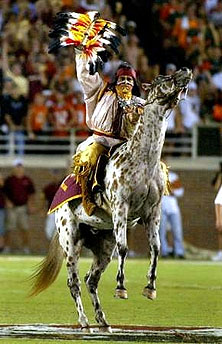

Chaat goes on to say how Indian artists in particular and Indians in general should resist thinking of themselves in stereotypical terms:
For me, too much of Indian art settles for the expected protest, and the comforting, pastoral images that for the vast majority of us originate exactly the same place as for non-Indians. Our pre-determined role is to remain within the images, of ecology, of anger, of easy celebration. There are many reasons the old myths are comforting and safe. Many Indian folks and our so-called friends in the Wannabee Tribe make a pretty good living dispensing jukebox spiritualism and environmental teachings. They believe being Indian means trying to be like the imaginary Seattle. History lessons from our recent past are irrelevant to the new Indian thought police, who prefer endless metaphysics on the essentially unknowable perfection of a past that has little relation to their own lives. A cultural politics that chooses European images over the real history of our people is a politics that encourages the commodification of distorted, invented Indian values. It's a politics that insists Indians produce passbooks to make art.
These constructs lead into a box canyon from a John Ford western, this idea of the Noble Savage. Artists can help lead us out, by refusing to play the assigned role and demanding an honesty in their own work and that of others that truly honors the outrageous story of our continued existence. This new generation must dare for something bolder. For those willing to leave behind the cheap, played out clichés a great project awaits. It is nothing less than a reclamation of our common history of surviving the unparalleled disaster of European contact and the creation of something new and dynamic from the ashes.
Our survival against desperate odds is worthy of a celebration, one that embraces every aspect of our bizarre and fantastic lives, the tremendous sacrifices made on our behalf by our parents and grandparents and their parents. Dressing up, intellectually or literally, to someone else's idea of who we are insults that rich tradition of struggle and resistance, and turns our party into someone else's freak show, with us as the entertainment.
More on the basic Indian stereotypes
The secret to writing Indians
Every Indian lived in a teepee?
Related links
What an Indian is not
A brief history of Native stereotyping
Stereotype of the Month contest
The essential facts about Indians today
|
. . . |

|
All material © copyright its original owners, except where noted.
Original text and pictures © copyright 2007 by Robert Schmidt.
Copyrighted material is posted under the Fair Use provision of the Copyright Act,
which allows copying for nonprofit educational uses including criticism and commentary.
Comments sent to the publisher become the property of Blue Corn Comics
and may be used in other postings without permission.